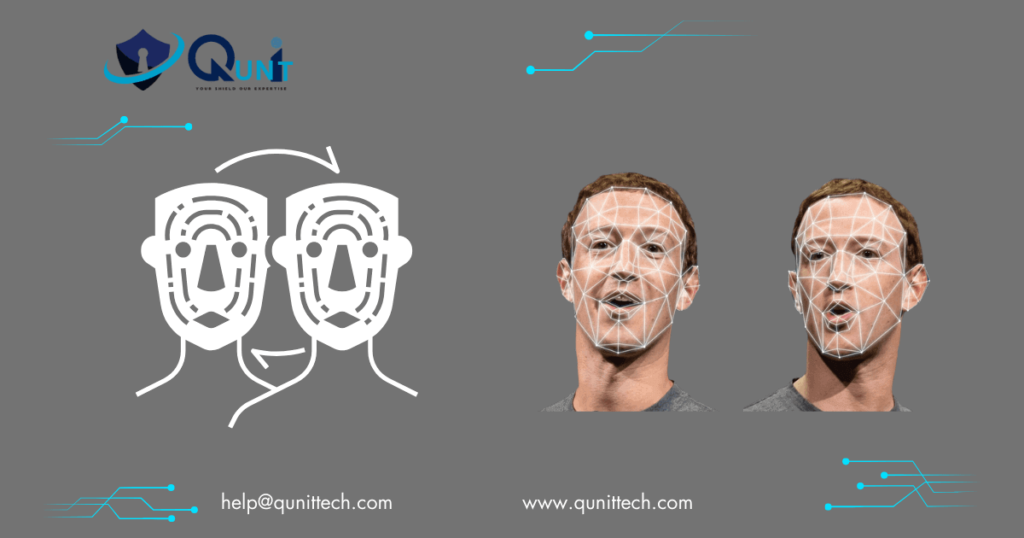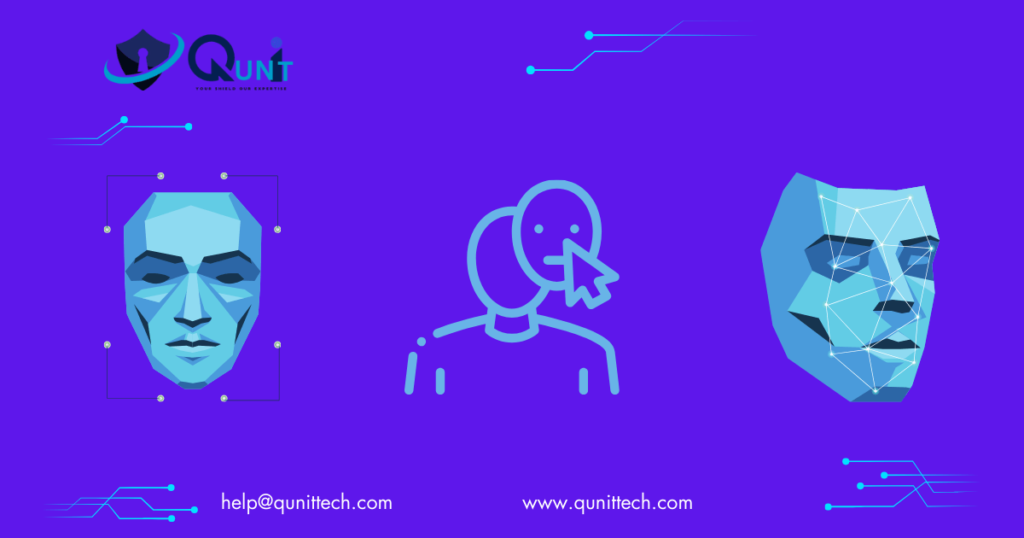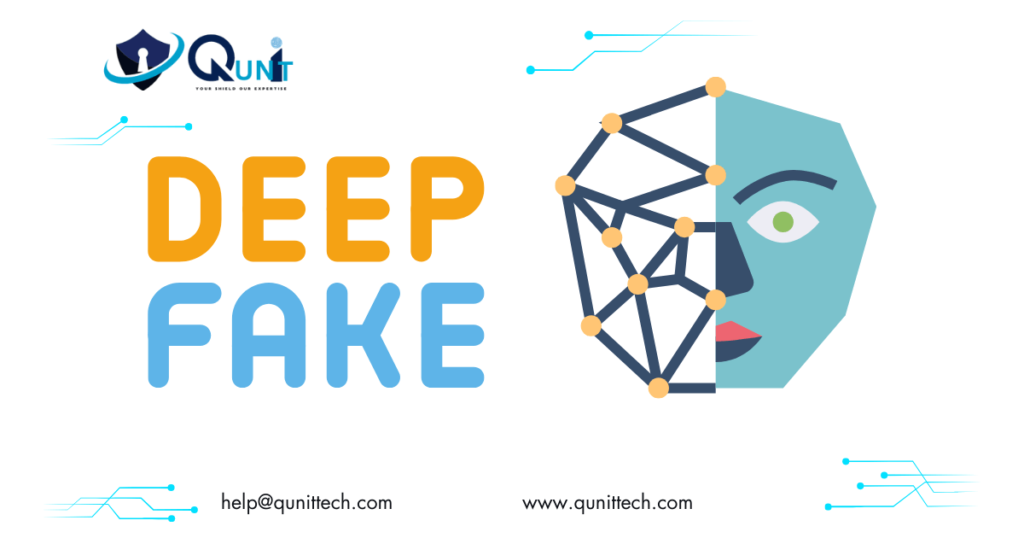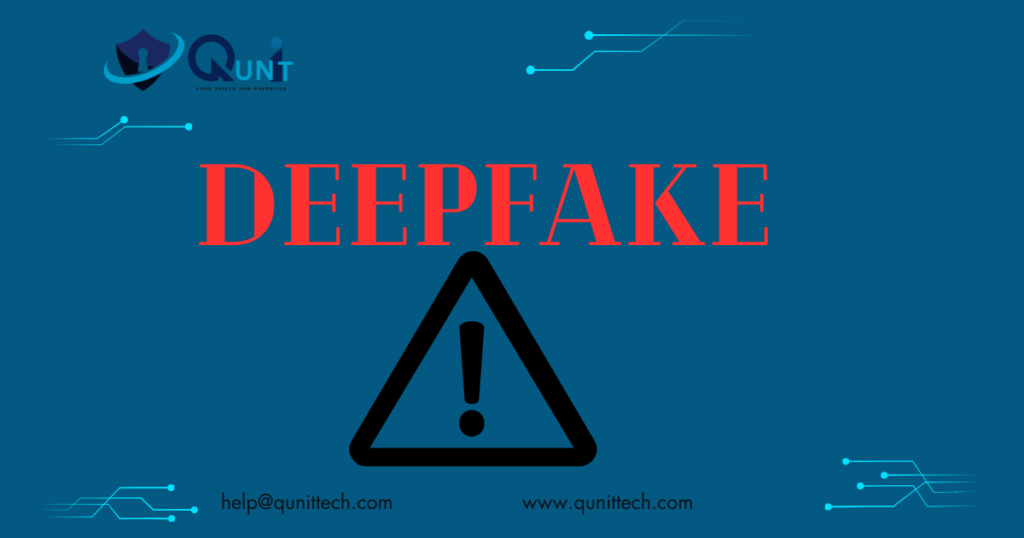What is Deepfake?
Deepfake is a type of fake content generated using advanced computer technology, especially artificial intelligence. It involves creating deceptive videos, images, or audio recordings that appear genuine but are entirely fabricated.
Imagine a video where the face of a famous actor is seamlessly replaced with the face of someone else, making it look like the actor is saying and doing things they never did.
It typically relies on sophisticated algorithms, particularly those related to generative adversarial networks (GANs). These AI systems are trained on vast amounts of data, allowing them to learn and mimic the visual and auditory characteristics of a specific person.
For instance, a deepfake algorithm could study the facial expressions, voice patterns, and mannerisms of a celebrity, enabling it to create a realistic video in which viewers think that the celebrity is present and engaging in certain actions or speech.
Technical Aspect of Deepfake

The technical side of deepfake involves the application of advanced artificial intelligence (AI) techniques, particularly deep learning, to create convincing fake content.
- Generative Adversarial Networks (GANs)
GANs are a type of neural network architecture central to deepfake creation. GANs comprise two primary elements: a generator and a discriminator.
The generator creates synthetic content (such as images or videos), and the discriminator evaluates whether the generated content is real or fake.
The generator and discriminator are trained together competitively, continually improving the generator’s ability to produce content that is increasingly difficult for the discriminator to distinguish from real data.
2. Training Data
Deepfake algorithms require large amounts of training data to understand and replicate the visual and auditory features of the target individual.
This training data often includes a diverse set of images, videos, or audio recordings of the target person to capture various expressions, poses, and speech patterns.
3. Facial Recognition and Mapping
For deepfake videos, facial recognition technology is employed to identify key facial landmarks and features in the target’s images or videos.
Facial mapping techniques use this information to create a detailed model of the target’s face, allowing the algorithm to understand how the face moves and expresses emotions.
4. Synthesis and Overlay
Once trained, the model can synthesize new content by generating facial expressions, movements, or speech that mimic the target individual.
In video deepfakes, the generated content is seamlessly overlaid onto existing footage, making it appear as if the target person is performing actions or saying things they never did.
5. Voice Cloning
Voice cloning algorithms can replicate the unique characteristics of a person’s voice, enabling the creation of synthetic speech that sounds convincingly like the target.
6. Fine-tuning and Iteration
Deepfake creators often fine-tune their models based on feedback from the generated content. This repetitive process helps improve the realism and believability of the deepfakes over time.
Understanding the technical aspects is crucial for developing countermeasures, such as detection algorithms, to mitigate the potential misuse of this technology for deceptive purposes.
The Danger of Deepfakes

- Misinformation and Deception
It can be used to create realistic videos or images that portray individuals saying or doing things they never did. This has the potential to spread false information, damage reputations, and manipulate public opinion.
2. Identity Theft and Privacy Violations
This technology can be employed for identity theft, creating fake content that closely resembles a specific person. This can result in serious privacy violations, as individuals may be falsely implicated in compromising or inappropriate situations.
3. Political Manipulation
It can be weaponized for political purposes, creating fabricated content that misrepresents political figures or events. This can influence elections, sow discord, and undermine the trust in political processes.
4. Erosion of Trust
The prevalence of deepfakes contributes to a growing distrust in the authenticity of digital media. As it becomes more challenging to discern real from fake, people may become skeptical of the information presented online, eroding trust in digital content.
5. Security Threats
This technology could be exploited for security threats, such as creating fake audio or video evidence in legal cases, corporate espionage, or compromising the integrity of surveillance systems.
6. Ethical and Psychological Impact
The creation and dissemination of deepfakes raise ethical concerns about consent, as individuals may be portrayed in compromising situations without their knowledge or permission. The psychological impact on victims of deepfake attacks can be severe, leading to emotional distress and damage to personal relationships.
7. Challenges for Media and Journalism
The widespread use of deepfakes challenges the credibility of media and journalism. Authenticity becomes a critical issue, and the public may struggle to differentiate between genuine and manipulated content.
Addressing the dangers of deepfakes requires a combination of technological solutions, public awareness, and policy measures to safeguard against the malicious use of this technology.
Ethical Aspects of Deepfake Use
This technology has raised significant ethical concerns, there are instances where its application can be considered ethical.
- Entertainment and Creative Expression
This has found legitimate applications in the entertainment industry for creating special effects, resurrecting deceased actors in films, or enabling impersonations for comedic purposes.
2. Preservation of Cultural Heritage
Deepfake technology can be employed to restore or recreate historical figures and events, preserving cultural heritage in a visually engaging manner. This can enhance educational experiences and bring history to life for future generations.
3. Aiding Visual Impairment and Accessibility
Deepfake algorithms can be utilized to generate realistic lip-syncing for individuals with speech impairments or to create sign language avatars. This could improve accessibility and communication for people with disabilities.
4. Digital Avatars and Virtual Influencers
The creation of digital avatars or virtual influencers through deepfake technology has been used for marketing and entertainment purposes. While this raises questions about authenticity, it also opens new avenues for creative expression and storytelling.
5. Education and Simulation
It can be employed in educational settings for simulations and training exercises, allowing learners to engage with realistic scenarios. This can be particularly beneficial in fields such as healthcare, emergency response, and military training.
6. Historical Documentaries and Reenactments
Deepfake technology can enhance the production of historical documentaries by realistically recreating events or figures. This enables filmmakers to bring historical narratives to life in a compelling and immersive manner.
7. Digital Resurrections for Personal Purposes
Some individuals may use deepfake technology to create digital resurrections of loved ones, allowing them to generate virtual conversations or interactions with deceased family members. While this raises ethical considerations, it can serve as a form of coping or remembrance.
Unethical Aspects of Deepfake Use
Deepfake technology raises significant ethical concerns, primarily when used in ways that exploit, deceive, or harm individuals and society.
- Security Threats and Legal Implications
The use of deepfakes in legal cases, corporate espionage, or compromising surveillance systems can have serious security implications. It may be used to create fake evidence, leading to false accusations or legal complications.
2. Exploitation and Harassment
Deepfakes can be weaponized for exploitation and harassment, especially when used to create non-consensual explicit content featuring unsuspecting individuals. Victims may experience profound emotional and psychological repercussions as a result of this situation.
3. Unethical Marketing and Advertising
It can be misused for deceptive marketing or advertising practices, where products or services are promoted using fabricated endorsements from celebrities or influencers. This can mislead consumers and harm the integrity of the advertising industry.
Methods for Detecting Deepfakes

Detecting deepfakes is a challenging task due to the sophistication of the technology. However, researchers and technologists have developed various methods to identify manipulated content.
1. Forensic Analysis of Metadata
Examining the metadata of media files can reveal inconsistencies or anomalies that may indicate manipulation. This includes checking for unusual timestamps, compression artifacts, or discrepancies in camera information.
2. Analysis of Facial and Body Movements
Deepfake videos often exhibit unnatural facial or body movements. Facial analysis tools can assess inconsistencies in expressions, blinking patterns, or lip-syncing. Additionally, abnormal head or body positioning may suggest manipulation.
3. Consistency Across Frames
Authentic videos maintain consistency in facial features and expressions across frames. In contrast, deepfakes may exhibit inconsistencies or distortions when examined frame by frame. Analyzing these patterns can reveal signs of manipulation.
4. Micro-expressions and Blinking Patterns
Deepfake algorithms may struggle to replicate natural micro-expressions and blinking patterns. Detection methods involve analyzing the timing and realism of facial micro-expressions and blinking, which are challenging for AI to simulate accurately.
5. Analysis of Eye Reflections
Authentic videos often capture reflections in the eyes, such as light sources or the surroundings. Deepfakes may lack realistic eye reflections, revealing inconsistencies that can be detected through careful analysis.
6. Spectral Analysis of Audio
For deepfake audio detection, spectral analysis can reveal anomalies in the frequency spectrum. Inconsistencies in voice patterns, pitch, or unnatural pauses may indicate the presence of synthesized or manipulated audio.
7. Deep Learning-based Detection Models
Deep learning models can be used for detection as well. Models are trained on both authentic and deepfake content, learning to recognize patterns indicative of manipulation.
8. Reverse Engineering the Deepfake Model
Researchers may reverse engineer deepfake models to understand their characteristics. By identifying specific artifacts or fingerprints left by the generative algorithms, detection methods can be developed to spot these patterns in new deepfake content.
9. Blockchain Technology for Authentication
Blockchain can be used to establish and verify the authenticity of digital content. By storing cryptographic hashes or certificates on a blockchain, one can track the origin and any modifications to the content, ensuring its integrity.
10. Collaborative Approaches and Datasets
Collaboration within the research community is crucial. The development of shared datasets for training detection models helps improve the validity of detection techniques by exposing models to a diverse range of deepfake scenarios.
Defending Against Deepfakes

Defending against deepfake threats involves a varied approach that combines technological solutions, awareness, and proactive strategies.
1. Development of Robust Detection Systems
Invest in the research and development of advanced detection systems that can analyze media content for signs of manipulation. Machine learning algorithms and forensic analysis tools play a crucial role in identifying anomalies indicative of deepfakes.
2. Educating the Public and Media Literacy
Create awareness about deepfakes and their potential impact. Educate the public on how to critically evaluate media content, encouraging skepticism and fact-checking to mitigate the spread of false information.
3. Promoting Digital Literacy
Digital literacy programs should cover topics such as media manipulation techniques, online security, and responsible information consumption.
4. Blockchain Technology for Content Authentication
Leverage blockchain technology to establish and verify the authenticity of digital content. By storing cryptographic hashes or certificates on a blockchain, the integrity of content can be ensured, making it difficult for malicious actors to manipulate without detection.
5. Two-factor authentication for Media Creation
Implement two-factor authentication mechanisms for accessing and using media creation tools. This adds an extra layer of security, requiring additional verification steps to prevent unauthorized access and misuse.
6. Watermarking and Digital Signatures
Embed watermarks or digital signatures within media content to signify its authenticity. Detection systems can then check for the presence and integrity of these markers, helping to identify manipulated content.
7. Collaboration and Information Sharing
Promote collaboration within the industry and research community. Shared datasets, research findings, and best practices can enhance the collective ability to detect and defend against emerging deepfake techniques.
8. Legal and Regulatory Frameworks
Establish and enforce legal frameworks that explicitly address the creation and dissemination of deepfakes. Clear consequences for malicious use can act as a deterrent and provide a basis for legal action against those responsible for creating or spreading deceptive content.
9. Constant Monitoring and Adaptation
Deepfake techniques evolve rapidly, so continuous monitoring of emerging trends is essential. Detection systems and defense strategies should be regularly updated and adapted to stay ahead of new developments in deepfake technology.
10. User Authentication and Authorization
Implement robust user authentication and authorization protocols for platforms that host and share media content. Verifying the identity and permissions of users helps prevent unauthorized access and manipulation.
11. Encourage Responsible Use of Technology
Promote ethical considerations in the development and use of AI and deepfake technologies. Encourage developers and users to prioritize responsible applications that align with ethical standards and societal norms.
By combining technological defenses, education, legal measures, and industry collaboration, it’s possible to build a stronger defense against the harmful effects of deepfake technology.
check out the blog: 7 Powerful Strategies to Protect Yourself From Social Engineering Attacks
